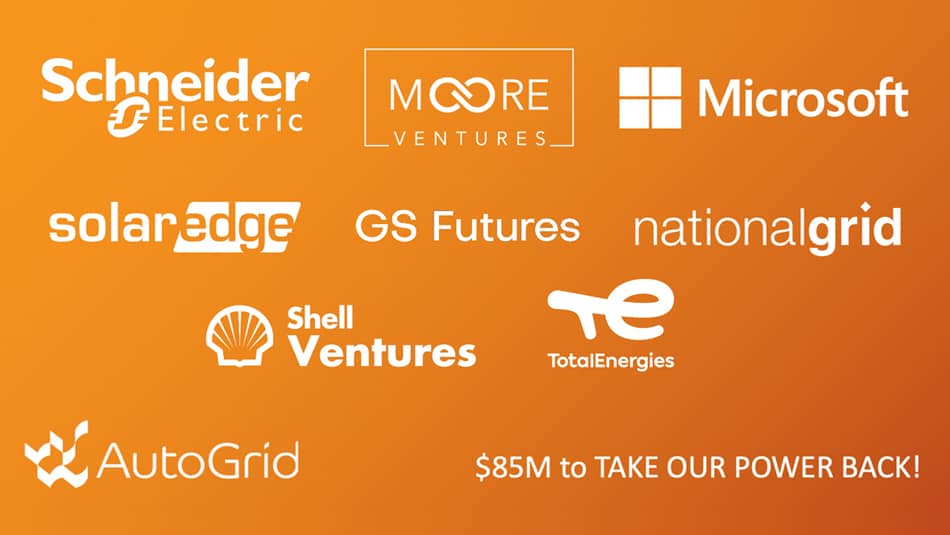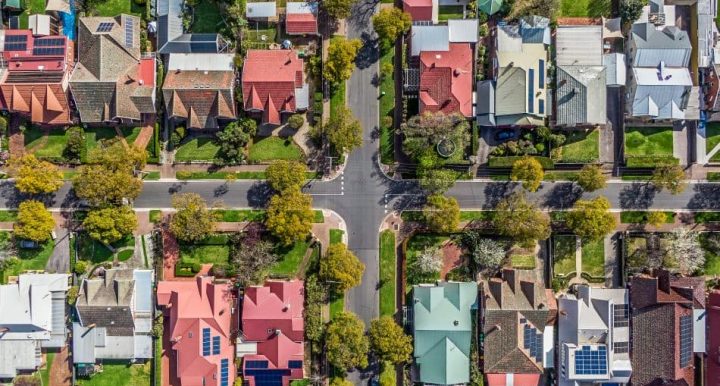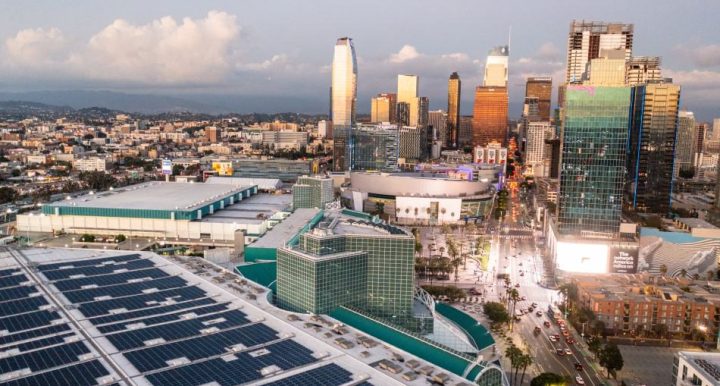During Summer of 2021, AutoGrid VPPs were dispatched 1,800 times, delivering over 5,000 MW of capacity and 37,000 MWh of energy when the electricity grid was most stressed.
Wow! Has it been 10 years already! Time flies when you are having so much fun!
I started AutoGrid when my elder son was just starting kindergarten and my younger daughter was about to be born, and I started thinking about the world they will have to grow up in and the dangers of climate change. I realized that the electricity sector was one of the major sources of carbon emissions, but also the biggest opportunity to transition into a sustainable world. If we could deploy solar and wind, and use this renewable energy to power our cars and homes, we would make a big dent in the problem. However, I soon realized that the architecture of our power grid would need to be reimagined. This is when I started AutoGrid to become a catalyst for transition into clean energy.
From the day we were founded, we have been obsessed with making our energy systems smarter in our quest to decarbonize our society. Over a hundred years, our centralized, one-way power system has been built with the core assumption that electricity consumers are ‘random’ actors, and the only way to keep the system stable is by utilities dispatching their generators. This paradigm has led to utilities spending hundreds of billions of dollars in building ‘peaker plants’ which are only fired up when the electricity demand is excessively high, say during a hot and sticky summer afternoon. Let’s look at some stats to see why this is a problem:
- There are more than 1,000 peaker plants across the U.S. (map) costing over a trillion dollars.
- Many of these plants sit idle 80 to 99% percent of the time. In New York City, the 18 peaker plants run at an average capacity factor of 6% (~ 500 hours per year).
- The low capacity factor makes these peaker plants expensive to operate. In New York City, the average cost of peaker plant electricity is 1300 percent higher than the overall average cost of electricity, costing consumers approximately $4.5 billion over a 10-year period.
- These peaker plants are disproportionately dirty even by fossil-fuel standards. They run for less than 5 percent of the hours but create more than 10 percent of all emissions.
- Even worse, emissions from peaker plants disproportionately impact low-income families: It’s estimated half of California peaker plants are located in disadvantaged communities
- These peaker plants are often unreliable because the transmission and distribution lines that carry the power from a centralized location are subject to disruption from hurricanes and storms. For example, a 128-megawatt generation unit failed to provide power during Hurricane Ida, which hit 16 years to the day after Hurricane Katrina.
Unfortunately, unless we challenge the status quo, demand for faster-responding peaker plants able to balance supply and demand will likely increase even further. For every MW of wind energy added to the grid, if an equivalent MW of a fossil-fuel plant is required to balance it, it defeats the purpose of building wind and solar in the first place!
Harnessing the Power of AI
Fortunately, there’s a better way. When I started working on this problem, I realized that by utilizing the power of AI and the cloud, we might be able to break the century-old assumption that power can only flow one way. We reimagined a new architecture for the electricity grid, where we could harness the flexibility of all energy assets and create Virtual Power Plants (VPPs) that keep the grid balanced – in a cheaper, cleaner, more reliable manner than before.
Here’s how this works:
- VPPs allow orchestration of millions of distributed energy assets, sometimes controlled by energy utilities, but often located on regular customers’ premises.
- VPPs harness power from batteries, solar panels, electric vehicles, and even thermostats – which all talk to one another virtually over the cloud.
- VPPs automatically direct the flow of energy across the grid to ensure power is delivered exactly where it is needed and precisely when it is needed, regardless of where it is being produced.
In other words, VPPs turn you from a consumer to a prosumer, so that you can take your power back!
10-years of Hard Work, Global Impact
Over the last 10-years, we have been working relentlessly to perfect and scale this science of flexibility management, and I am proud to say that we have made significant progress.
Today, AutoGrid helps manage over 5,000 MW of VPPs across 15 countries. To put this in perspective, this is roughly equivalent to eliminating all the peaker plants in New York City and saving, 1.8 Million Tons of CO2 and $4.5 Billion of operating cost in 10-years.
In the recently concluded summer season which was once again the hottest on record for the contiguous United States, our VPPs were dispatched approximately 1,800 times. In all, more than 100,000 distributed energy resources (DERs) provided over 37 GWh of flexible energy when the electricity grid was most stressed. We were honored to serve as a reliable partner to our customers in 15 countries globally. Guidehouse Research ranked us as the #1 VPP Platform in the world.
In the US, we were most active in California and Texas, where the electricity grid is experiencing some of the worst impacts of climate change. In California, we have continued to deepen our partnerships with Sunrun (NASDAQ:RUN) and Swell and utilities such as Southern California Edison, to optimize some of the largest fleets of residential batteries. We entered into a strategic partnership with student transportation company Zūm to deploy 10,000 electric school buses to create over one gigawatt of flexible capacity on the grid. In San Antonio, Texas, our award-winning deployment with CPS Energy has completed five successive years of operation and is now managing approximately 250MW of peak power, saving the utility customers millions of dollars in electricity cost and helping stabilize the Texas ERCOT grid. Around the globe, in Europe Total SE successfully commissioned a 25MW/25MWh lithium-ion system at the Flandres Center in Dunkirk’s port district in France, making this the largest battery in the Frequency Containment Reserve markets of Europe. In the Asia Pacific region, we continued to work with market trailblazers such as Tata Power DDL in India, CLP in Hong Kong, and Eneres in Japan.
Road Ahead: ‘One-stop-shop’ Turn-key VPP Powered by AutoGrid
After building and operating VPPs for close to a decade and operating them at scale around the world, we have realized that there is still more work ahead of us. Utilities that are trying to replace their peaker plants as well as our partners who are deploying fleets of distributed energy resources face significant challenges. There are too many players in this ecosystem, who have to all share data and transact with each other.
Today, we are taking a huge step forward in solving the systemic issues and simplifying the entire VPP ecosystem because we believe utilities, developers, OEMs, and most importantly consumers deserve better. We are introducing a fully Turnkey-VPP offering, where we will manage all aspects of building, operating, and maintaining a virtual power plant. To the utilities, it will look just like a peaker plant they are used to, except that it is 100% clean, and significantly cheaper. For our partners, this takes away the significant burden of interfacing with utilities or dealing with energy market complexities so that they can focus on creating the best value for their customers. We simply help them get more money from their assets, which they can use to reduce the cost for their customers.
Last month, we announced our partnership with Clean Power Alliance (CPA) in California to bring 10,000 homes into our turn-key VPP. We are doing this in conjunction with leading OEMs and energy-as-a-service companies such as Sunnova (NYSE: NOVA), ChargePoint (NYSE: CHPT), ecobee, Emerson (NYSE: EMR), and Google Nest. For the first time, we have become a full scheduling coordinator in California ISO. By the end of this year, we will be a qualified market participant in all major ISO/RTO markets in the US.
Today, we are excited to announce an $85 million round of funding led by SE Ventures, the $500 million venture capital fund based in California, established by industrial major Schneider Electric. Several other investors, including Moore Strategic Ventures, SolarEdge Technologies (NASDAQ: SDGE), Microsoft (NASDAQ: MSFT) Climate Innovation Fund, GS Futures, National Grid Partners, Shell Ventures, and Total Carbon Neutrality Ventures joined the round as well. This brings the total raised to approximately $150 million.
We will use the new capital to further our mission to accelerate the energy transition with an ambitious goal of deploying 10-GW of turn-key VPPs in the next 5-years.
None of this would have been possible without our amazing team who has shared this vision and executed tirelessly all these years. To all my current and past colleagues, I want to say Thank You! Whether you have been on this journey from the very beginning, or joined me more recently, or were together for only a portion of this, I cherish each and every moment that we have spent together dreaming about a better future!





